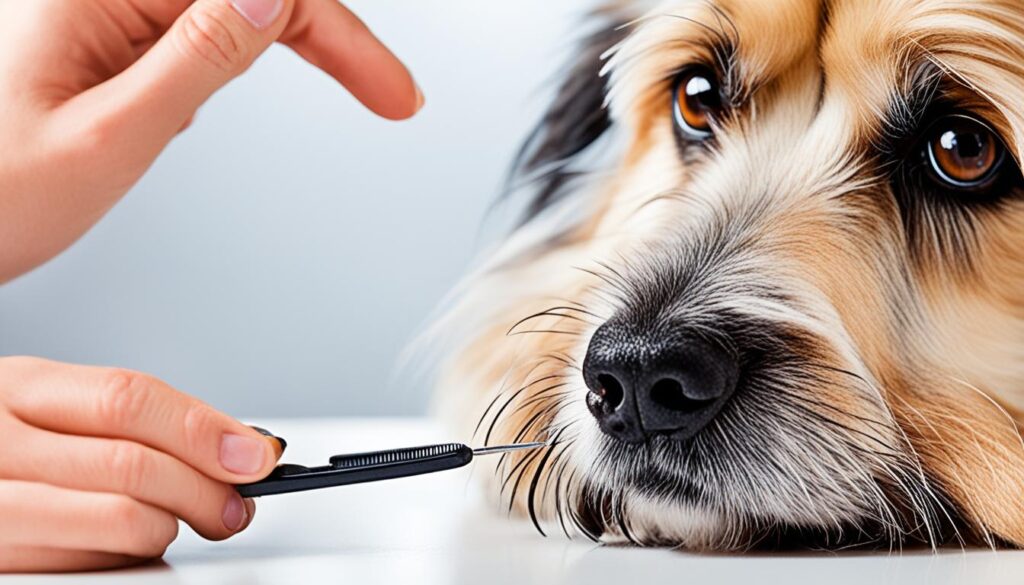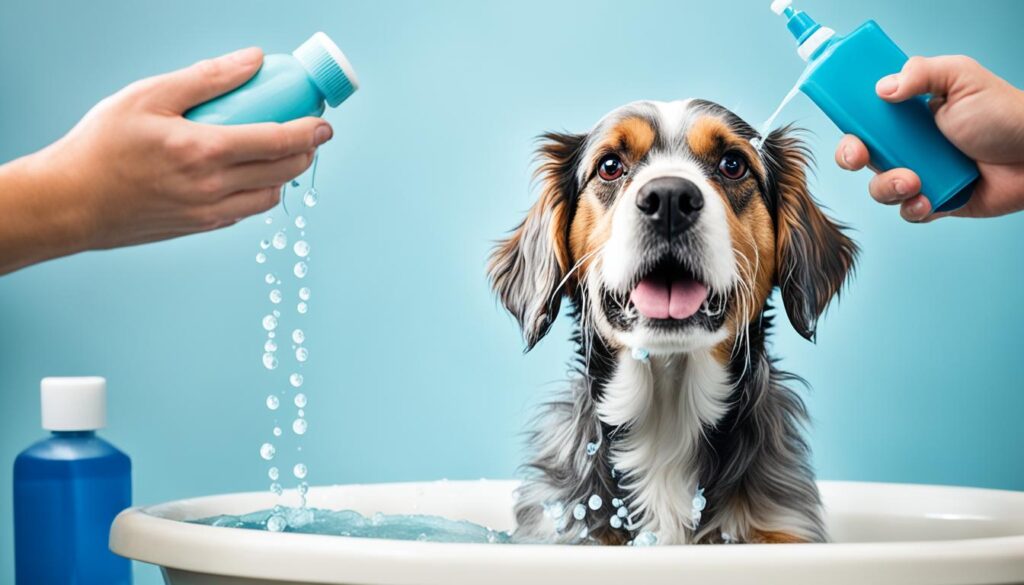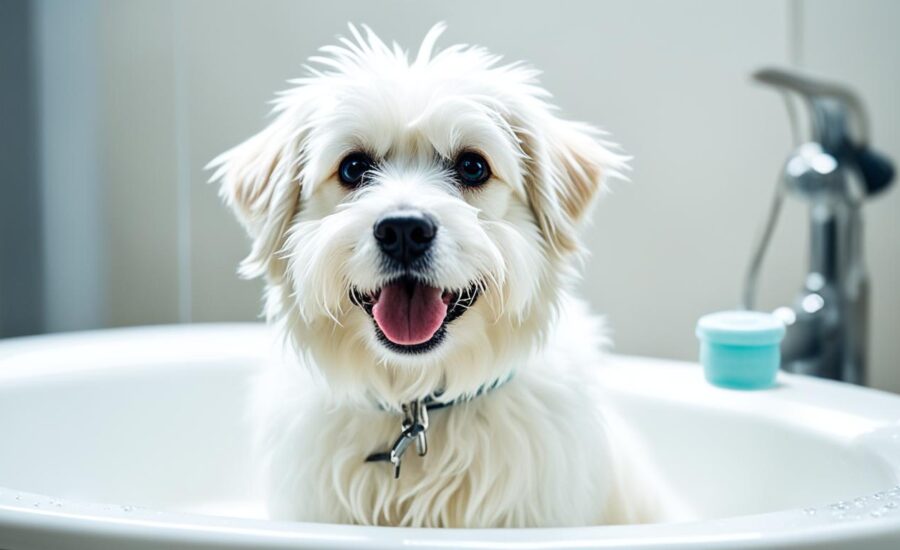Every pet owner loves their fluffy friend. Yet, lurking in their cozy fur might be fleas and ticks. When last did you deeply clean your pet, focusing on flea and tick prevention? There’s a deep connection between pet health and grooming. Good grooming acts as a front-line shield against preventing parasites during grooming. This guide offers grooming tips for pet happiness and your peace of mind.
Knowing how urgent grooming for flea and tick control is goes beyond just being clean. It’s about protecting your furry pal from discomfort, infections, and various diseases. We’ll show you the protection you make when you use proactive parasite prevention in your grooming routine. With the right know-how and tools, grooming can be a strong defense against these unwanted guests.
Key Takeaways
- Understanding the significance of consistent and thorough grooming tips for pets in combating fleas and ticks.
- Identifying the link between regular grooming sessions and overall pet health and grooming.
- Strategies for flea and tick prevention to safeguard your pets and home.
- Tips for grooming for flea and tick control that go beyond the basics.
- Approaches to preventing parasites during grooming, ensuring your pet’s comfort and reducing the risk of infestations.
The Significance of Flea & Tick Prevention in Pets’ Health
For our furry buddies, identifying fleas and ticks is crucial. It protects their health. These small pests can cause serious health problems. They spread diseases like Lyme disease and Rocky Mountain Spotted Fever.
Pet grooming best practices help keep pets clean and healthy. They prevent diseases before they start.
Preventing fleas and ticks is key. It should be part of regular grooming. Use different treatments like topicals, oral medications, and environmental controls. A pest-free home is safer for pets.
Regular grooming lets you spot infestations early. This helps tackle the problem before it gets worse.
Let’s explore various preventive products. Check out this table:
| Preventative Type | Application | Duration of Effectiveness | Considerations |
|---|---|---|---|
| Topical Treatments | Applied to the skin | Up to 1 month | Water-resistant options |
| Oral Medications | Given by mouth | Varies by medication | Taste and ease of administration |
| Collars | Worn around the neck | Several months | Adjustability and scent |
| Shampoos | Used during bathing | Immediate, short-term | Skin and coat condition |
| Sprays | Applied to coat and environment | Immediate, varies by product | Non-staining and odor |
Choosing the right preventative involves a vet. Consider the pet’s lifestyle and breed needs. This tailored approach minimizes side effects.
Using pet grooming best practices and prevention. This keeps pets safe from fleas and ticks. Pet owners can rest easy, knowing their pets and homes are healthy.
Understanding and Identifying Fleas and Ticks on Your Pet
Starting the fight against parasites means knowing about pet health and grooming. Spotting fleas and ticks early is key. When grooming your pet, watch for unusual behavior or changes. This helps keep your pets comfy and your home clean.
Early Detection: Signs Your Pet May Have Parasites
Wondering how to find fleas and ticks early? Look for signs like non-stop scratching, tiny black specks called “flea dirt,” and skin issues. Dogs and cats may not show when they’re hurting. But if you’re observant, you can catch these signs early. This helps you take action fast.
Regular grooming paired with careful examination acts as the first line of defense in parasite detection and prevention.
Distinguishing Between Fleas and Ticks
Knowing your foe is critical. Fleas cause itchiness and can jump high. Ticks, however, are sneaky and suck blood from your pets for days. Knowing the differences helps you choose the right treatment and prevent problems.
Checking your pet during grooming can help spot these bugs early. Using a flea comb works well to catch them and figure out the treatment needed.
Common Areas Where Ticks Latch Onto Pets
Knowing where to check for fleas and ticks is crucial. Ticks like places like ears, eyelids, collar area, under the pet, toes, around the tail, and between the legs. Always do a full-body check during grooming, especially if your pet spends time outside.
By learning about flea and tick behavior and grooming your pet regularly, you create a healthy space for them. This keeps parasites away with careful prevention and treatment.
How to Spot and Treat Fleas and Ticks During Grooming
Keeping your pet free from pests like fleas and ticks is key in grooming. It’s important to be alert during grooming sessions. This lets owners catch these pests early and treat them right. Let’s look at how proper grooming keeps your pet healthy.
Step-by-Step Process of Flea and Tick Grooming
Begin by checking your pet’s fur and skin closely. Use a fine-toothed comb to go through their fur. Watch for signs of fleas or tiny black dots that show flea dirt. If your pet’s skin looks irritated or they scratch a lot, think about using a flea bath. Choose shampoos with aloe vera or oatmeal to calm the skin.
Identifying and Dealing with an Infestation
If you find pests, act fast. Use shampoos and conditioners designed to kill pests and prevent them from coming back. After the bath, comb your pet’s wet fur again. This removes any fleas or ticks loosened by the bath.
Post-Grooming Tick Removal Techniques
Some tough ticks might stick around after a bath. Remove these with care using tools like tweezers or a tick hook. Make sure to grab the tick close to the skin but don’t squeeze it. Pull it straight out gently. After grooming, check your pet’s fur for any left behind. Also, use preventatives to keep pests away in the future.

| Flea and Tick Treatment | Description | Recommended Use |
|---|---|---|
| Flea Bath with Specialized Shampoo | Shampoo with ingredients to kill pests and soothe skin. | When you first see fleas or flea dirt. |
| Flea Combs | A comb to find and remove fleas from fur. | Use it often, especially after baths. |
| Fine-Point Tweezers/Tick Hook | Tools for safe tick removal from the skin. | Use after finding ticks during a coat check. |
| Preventative Treatments | Products like treatments and collars against pests. | Apply as directed by the vet or packaging. |
The Role of Flea Baths in Parasite Management
Making flea baths part of grooming for flea and tick control is key for your pet’s health. These baths are very important in flea and tick prevention. They keep your pets healthy and comfy. By using flea baths right, owners can beat those annoying parasites.

Choosing the Right Flea Shampoo
To start, picking a good flea shampoo is essential for control and prevention.
- Choose shampoos that fight fleas, ticks, and lice.
- Look for ingredients like lanolin, aloe vera, or coconut for sensitive skin pets.
- Select products that offer quick and lasting protection against parasites.
The Correct Frequency of Flea Baths
Flea baths are vital for a pet’s health, but don’t overdo it. How often to bathe them depends on several things:
| Pet’s Skin Type | Environment | Product Used | Recommended Frequency |
|---|---|---|---|
| Sensitive Skin | Outdoorsy | Natural flea shampoo | Once every two weeks |
| Normal Skin | Indoor only | Chemical flea shampoo | Once a month |
| Dry Skin | Mixed Indoor/Outdoor | Shampoo with moisturizers | Adjusted as needed |
After-Bath Care Following Flea Treatment
After-bath care is as crucial as the bath itself. Here’s what to do after treating your pet:
- Dry them well to make sure they’re comfy and to lessen skin irritation risk.
- Comb them gently to untangle fur and get rid of dead parasites.
- Watch for itching or allergic reactions and see your vet if they happen.
With the right products and care, flea baths are a strong defense against fleas and ticks. Following the suggested guidelines helps keep your pets healthy in a pest-free home.
Top Flea & Tick Removal Techniques and Tools
Keeping your pet healthy and well-groomed is essential. Flea and tick removal is a big part of their care. Knowing the best tools and methods can help keep your pet comfy and healthy. Here, we’ll show you the top tools for getting rid of those annoying fleas and ticks.
Effective Flea Combs and How to Use Them
Flea combs are key for spotting and removing fleas from pets. These combs have tight teeth that catch fleas, eggs, and dirt. To use one, begin at the head and comb towards the tail, and don’t forget the belly and thighs. Clean the comb in soapy water after each swipe to kill the fleas.
Ticks Removal: Fine-Point Tweezers vs. Tick Hooks
For ticks, fine-point tweezers and tick hooks are your best friends. Use tweezers to grab ticks right next to the skin. Tick hooks, though, may be better for tough spots or if there’s a lot of them. Both are great for keeping your pet tick-free. Yet, always get your vet’s advice on which to use for your pet.
Recognizing Safe and Effective Flea & Tick Products
Next to grooming, using the right flea and tick preventives is key. Choose vet-approved products that are safe. Watch for harsh chemicals and know what’s in the products. Grooming often with the right shampoos can help you find fleas and ticks early. Keeping your pet’s space clean also helps prevent these pests in the first place.
FAQ
What are the benefits of regular flea and tick prevention during grooming?
How can you tell if your pet has fleas or ticks?
Where should you check for ticks on your pet?
What is the step-by-step process for spotting and treating fleas and ticks during grooming?
How often should flea baths be given to pets?
What after-bath care is important following a flea treatment?
What tools are effective for flea and tick removal?
How do you choose safe and effective flea & tick products?
Source Links
- https://prideandgroom.com/blogs/news/flea-and-tick-prevention-for-dogs
- https://www.medi-vet.com/flea-and-tick-shampoo-guide-s/2191.htm
- https://luckydawgsalongrooming.com/the-ultimate-pet-guide-for-flea-tick-prevention/

